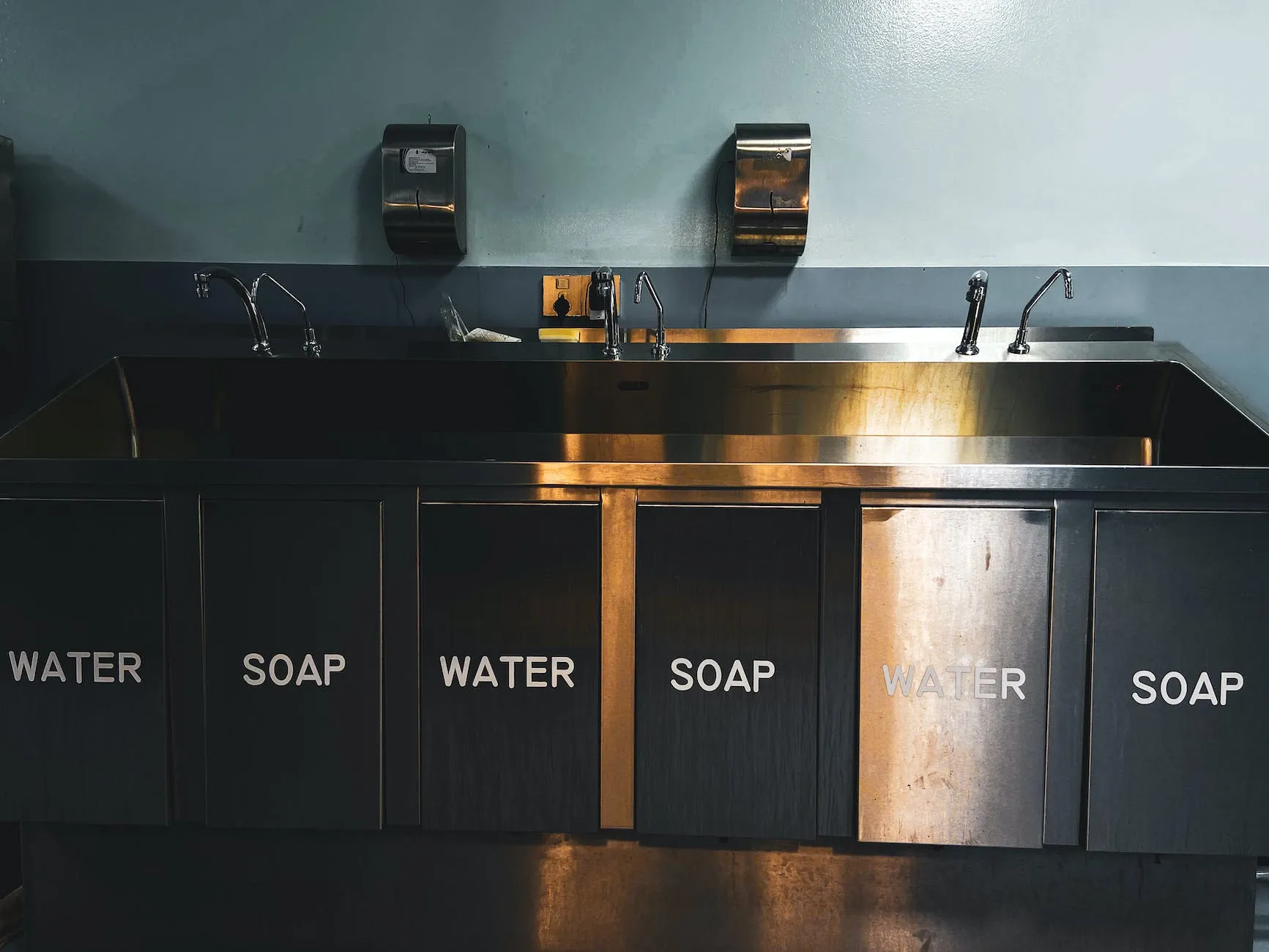One of the most common issues that homeowners face is a loose or wobbly kitchen sink. If your sink is starting to wobble, it’s not just because of the wear and tear of everyday use. There may be something wrong with the base, and you need to take action to fix it.
In this article, we will show you how to tighten the kitchen faucet base the right way so that your sink stays put and doesn’t cause any more damage.
What Is a Kitchen Faucet Base?
A kitchen faucet base is a component of a kitchen sink that helps support the sink and keep it from wobbling. It also provides a platform for attaching the faucet to the sink. A variety of different materials are used for kitchen faucet bases, including metal, plastic, and glass. Some bases come with apron-style covers that protect the sink from scratches and dents.

How To Tighten Kitchen Faucet Base?
If your kitchen faucet is not tightening up as it should, the base may have a problem. Follow these simple steps to tighten a kitchen faucet base:
- Shut off the water supply to the faucet.
- Loosen the hose connector if attached and remove the washer and nut that holds the stem on.
- Remove the stem by pulling it straight up out of the handle.
- If necessary, use pliers to twist the brass screw on top of the stem until it’s tight against the handle.
- Reattach the nut and washer and replace the connector on top of the stem.
- Turn on the water supply to the faucet and test for leaks.
What You Will Need?
To tighten a kitchen faucet’s base, you will need the following supplies:
- A wrench or screwdriver of the correct size
- Pliers
- An Allen key
How To Tighten a Kitchen Faucet Base the Right Way?
Tightening a kitchen faucet base can be difficult for the novice plumber. Here are two methods for tightening faucet bases:
- Use a wrench: Turn the knob on the faucet counterclockwise until it’s tight. Wrench it tight by hand if needed. If you have access to an adjustable wrench, use that instead of your hands to make the adjustment more snug.
- Use pliers: If you don’t have a wrench or if it’s too difficult to turn the knob on the faucet, try using pliers. Grip the front of the nut and crunch down with your other hand while turning the nut with your wrench or pliers. Do this around all four sides of the nut.
Either way, you should make sure that the faucet is tight against the sink before turning on the water. If water starts pouring out of the faucet when it’s not supposed to, there may be a leak somewhere along the plumbing line. Fixing a leak can be difficult and require professional help, so it’s always a good idea to contact a plumber before taking corrective action.
Locate The Base of Your Faucet
There are several ways to tighten a kitchen faucet base. One way is to use a wrench. Another way is to use a socket. A third way is to use pliers. The easiest way is to use a wrench. If the faucet has an Allen key, you can use that instead of a wrench. Follow these steps:
- Turn the water off at the main shut-off valve
- Remove the handle from the faucet
- Loosen the screws that hold the base on with an Allen key or wrench
- Gently pull the base off of the faucet
- Tighten the screws that hold the base on with an Allen key or wrench
Turn The Faucet on Levee
If you have a leaky kitchen faucet, tightening the base may be necessary to fix the issue. There are a few different ways to do this, but each has its own set of pros and cons. Here’s how to tighten a kitchen faucet base:
- Use a wrench to turn the faucet handle counterclockwise until it stops.
- Turn the wrench one or two turns further and hold it there while you unscrew the faucet assembly by hand. Make sure not to loosen any of the other parts!
- Remove the old gasket and replace it with a new one if necessary. Tighten the screws that secure it in place.
- Reinstall the faucet assembly, ensuring all the screws are tightened properly.

Release The Shutoff Valve
If your kitchen faucet is loose and water constantly comes out, it may be time to release the shutoff valve. To release the shutoff valve, turn on the cold water supply to your faucet and fully depress the handle. Once the handle has been depressed all the way, turn off the cold water supply to your faucet and release the stem from the handle.
Now turn on the hot water supply to your faucet and fully depress the handle. The water should start flowing freely from your faucet. If it does not, then you will need to tighten the base of your faucet by turning it in a clockwise direction using a hex wrench or a socket wrench (depending on its size).
If your kitchen faucet is still leaking, you may need to replace the valve.
Wiggle The Retaining Ring
If the faucet seems to be wiggling on its base, it may need to be tightened. Loosen the retaining ring by turning it counterclockwise with a Phillips screwdriver. Apply pressure to the ring with your fingers, then tighten the screws by hand. Be sure to tighten them around the circumference of the ring evenly. Repeat this process for each screw.
Tighten The Nut on The Base of The Faucet
If the water doesn’t flow from your kitchen faucet properly, it might be because the base is loose. Here’s how to tighten the nut on the kitchen faucet base:
- Turn off the water supply to the fixture by pressing the button on the valve stem or turning off the main water switch.
- Remove the handle.
- Open the spout by pulling up on it until it stops, and then rotate it 180 degrees so that it points away from you.
- Loosen the nut on the base of the spout using a wrench, if necessary.
- Rotate the spout back into place and tighten the nut using a wrench.
- Turn on the water supply to the fixture and check for leaks.
How To Tighten Delta Kitchen Faucet Base?
There are a few different ways to tighten a delta kitchen faucet base. The following tips will show you the most common technique:
- Turn the faucet handle all the way to the left, then all the way to the right. Be sure not to over-tighten!
- Using a wrench or pliers, tighten each screw one at a time in a counterclockwise direction until the faucet has stopped rotating.
- Repeat steps 2 and 3 on the other side of the faucet. Be sure not to over-tighten!
How To Tighten Moen Kitchen Faucet Base?
You can use a few different methods to tighten a kitchen faucet base. The most common way is to use a wrench. However, there are also tools that you can use to tighten the faucet without using a wrench.
If you do not have access to a wrench, you can use one of the following methods:
- Use pliers: Place the pliers around the faucet’s stem and twist it clockwise.
- Use needle-nose pliers: Place the needle-nose pliers around the stem of the faucet and twist it in an anticlockwise motion.
- Use tongs: Hold onto the top of the faucet with one hand and hold onto the base with another hand. Twist the faucet until it’s tight.
- Use a crescent wrench: Place the crescent wrench around the faucet’s stem and twist it clockwise.
- Use a screwdriver: Place the screwdriver around the stem of the faucet and twist it in a clockwise motion.
Tips To Keep Your Kitchen Faucet from Loosening
If your kitchen faucet is no longer holding water firmly, there are a few simple tips you can follow to tighten it up.
- Check the washer: First and foremost, check the washer. If it’s dirty or worn out, it could cause the faucet to loosen. Replace the washer as needed.
- Tighten the screws: Second, ensure all the screws that hold the base onto the stem are tightened evenly and securely. In some cases, this may be all that is required to keep your faucet from loosening over time.
- Try a new gasket: Finally, if all else fails and your kitchen faucet still refuses to stay tight, try replacing the gasket between the base and stem. This repair can be more complicated but may provide long-term relief from loose fixtures.
Conclusion
If your kitchen faucet is not tightening up or losing water pressure, there may be a few things you can do to tighten the handle and get your water flowing with more force. Following these simple steps, you should be able to restore lost water pressure and get the faucet working again.
Frequently Asked Questions:
How do you tighten the base of a kitchen faucet?
You can take a few steps to ensure that your kitchen faucet is tight and working properly. The first step is to unscrew the base of the faucet. This will give you access to the stem, which you can then adjust by tightening or loosening the screws on the stem. Next, check for leaks by poking a finger down the spout, and if water begins pouring out, it means there’s a leak at the connection between the pot and the faucet. Finally, make sure there aren’t any kinks or bends in the hosepipe connections, which could cause leaks.
How do you tighten a basin faucet?
There are a few different ways to tighten the base of a kitchen faucet. One is to use a wrench. Turn it until the faucet starts to come off of the stem. You can then use your other hand to hold on to the handle as you turn it further until it’s tight. Another method is to use pliers. Grab the base of the faucet with one plier and twist it counterclockwise until it pops off of the stem. Then, using your other hand, twist the base clockwise until it’s tight against the stem. The last method is to use a basin wrench. This tool has several different sizes that fit most bases. Simply unscrew the old base and screw on the new one, tightening it by turning it around in its hole.
Is there a tool to tighten the kitchen faucet?
There is no one-size-fits-all answer to this question, as the correct way to tighten a kitchen faucet base depends on your specific make and model. However, many homeowners can achieve satisfactory results by using a wrench or pliers to turn the faucet handle counterclockwise. Be cautious when working with your water supply, as hydraulic pressure can be dangerous if not handled correctly.
How do you tighten a loose kitchen spout?
If your kitchen spout is loose, it can be difficult to tighten it. Follow these steps to tighten a loose kitchen spout: look for the base of the spout and use a wrench to loosen it. The base should come off easily if you turn it counterclockwise. If the base is tight, screw it back on using the wrench and your fingers. Be careful not to over-tighten and strip the threads. Turn the spout clockwise until you reach the desired tightness.
